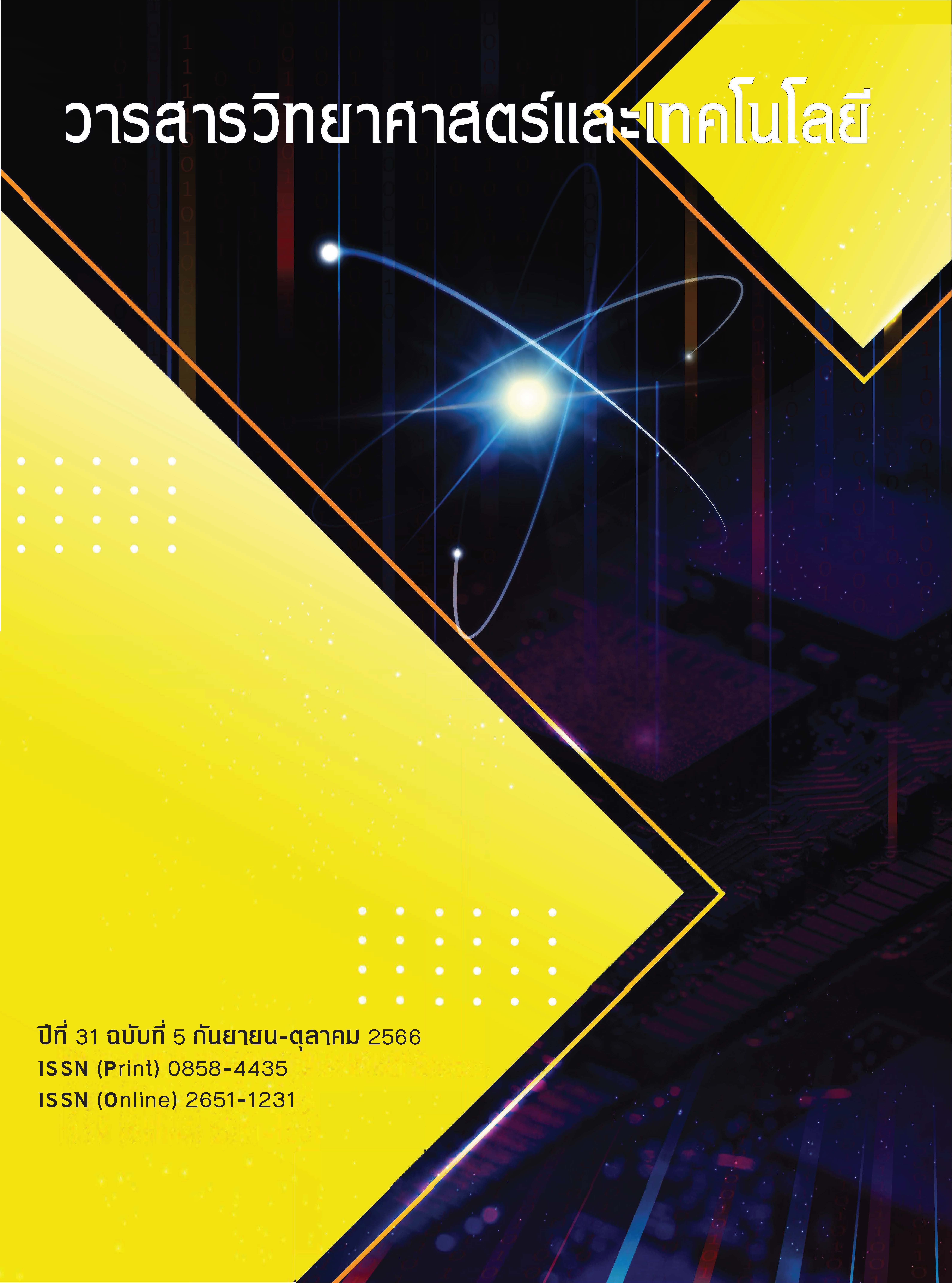Variety Selection of Pomegranate and Micropropagation for Cultivation in Thailand
Main Article Content
Abstract
The selection of pomegranate plants from Indian, Israeli, Croatian, and Spanish fruits was continuously performed and micropropagation of those selected plants was investigated. The study was performed between October 2017 and September 2019. The results showed that the plants of Israeli, Croatian, and Spanish pomegranates could be grown in the highlands of Thailand, however, they failed to progress to the reproductive growth stage. Therefore, they were discarded. Only Indian pomegranate plants were selected. The physical characteristics (growth and flowering) and fruit qualities (total soluble solid: TSS, and aril color) were considerable for Indian pomegranate selection, and 8 plants were chosen. Those selected Indian pomegranates could be divided into 2 groups: pink and red aril with TSS in the range of 13.0-14.0 °Brix.
The botanical characteristics of selected plants revealed that those morphological leaves were similar; leaf shape is oblanceolate, leaf base is cuneate, leaf apex is apiculate, leaf is entire, and leaf texture is chartaceous. The leaf of I-17 and I-18 were wider than others. In addition, I-18 has the highest leaf length of 54.32 mm. The flower forms at the leaf axil. The petals are orange, and petal sizes varied because the flowers were gradually formed.
The selected Indian pomegranate plants were propagated using the plant tissue culture techniques. The highest number of shoots, number of nodes, and shoot height were observed on MS medium supplemented with 2 mg/L BA. Rooting percentages of 65.63-96.88, with 2-3 roots measuring 1-2 cm in length, occurred on MS medium supplemented with 0.25 mg/L NAA. The rooted plantlets of Indian pomegranate were transplanted at Pang-Da Royal Agricultural Station and Mae-Lod Royal Agricultural Research Station. A survival rate of 100% was found after transplantation for 2 months.
Article Details
References
Pal, R.K., Babu K.D., Singh N.V., Maity A. and Gaikwad N., 2014, Pomegranate research in India – status and future challenges. Progressive Horticulture 46(2): 184-201.
Singh, S.K., Singh A., Singh N.V. and Ramajayyam D., 2010, Pomegranate tissue culture and biotechnology. Fruit, Vegetable and Cereal Science and Biotecnology 35-44.
Bhagat, S.K., Kherwar D. and Usha K., 2014, Diversity in fruit characteristics of pomegranate (Punica granatum L.). Progressive Horticulture 46(2): 248-253.
Nilsamranchit, S., Thongtham M.L.C., Mana K. and Chaiprasop C., 2001, Development research on the varietal improvement of pomegranate (Punica granatum) for fresh and processing products, Research Report, Royal Project Foundation, Chiang Mai, 97 p. (in Thai)
Royal Projection foundation, Available Source: http://www.royalprojectthailand.com/station-pangda, November 30, 2022. (in Thai)
Melgarejo, P., Martínez-valero R., Guillamón J.M., Miró M. and Amorós A., 1997, Phenological stages of the pomegranate tree (Punica granatum L.). Ann. Appl. Biol. 130: 135-140.
. Naik, S.K., Pattnail S. and Chand P.K., 1999, In vitro propagation of pomegranate (Punica granatum L. cv. Ganesh) through axillary shoot proliferation from nodal segments of mature tree. Scientia Horticulturae 79: 175-183.
ValizadehKaji, B., Ershadi A. and Tohidfar M., 2013, In vitro propagation of pomegranate (Punica granatum L.) cv. ‘Males Yazdi’. Albanian J. Agric. Sci. 12(1): 1-5.
ValizadehKaji, B., Ershadi A. and Tohidfar M., 2013, In vitro propagation of two Iranian commercial pomegranates (Punica granatum L.) cvs. ‘Malas Saveh’ and ‘Yusef Khani’. Physiol Mol Biol Plants 19940: 597-603.
Singh, P and Patel R.M., 2014, Factors influencing in vitro growth and shoot multiplication of pomegranate. The Bioscan., 9(3): 1031-1035.
Samir, Z., El-Agamy Rafat, Mostafa A.A., Mokhtar M. Shaaban and Marwa T. El-Mahdy., 2009, In vitro propagation of Manfalouty and Nab El-gamal pomegranate cultivars. Res. J. Agric. & Biol. Sci., 5(6): 1169-1175.


